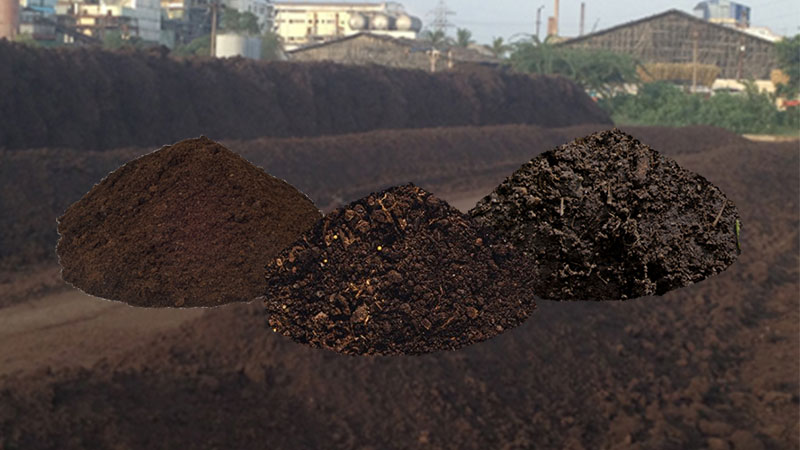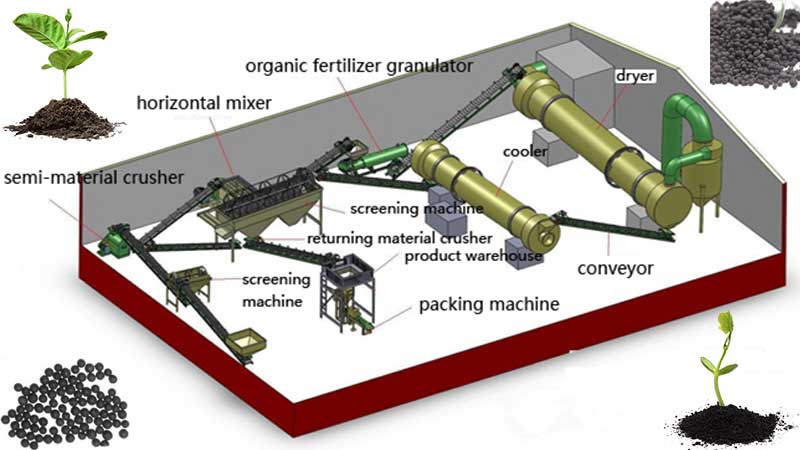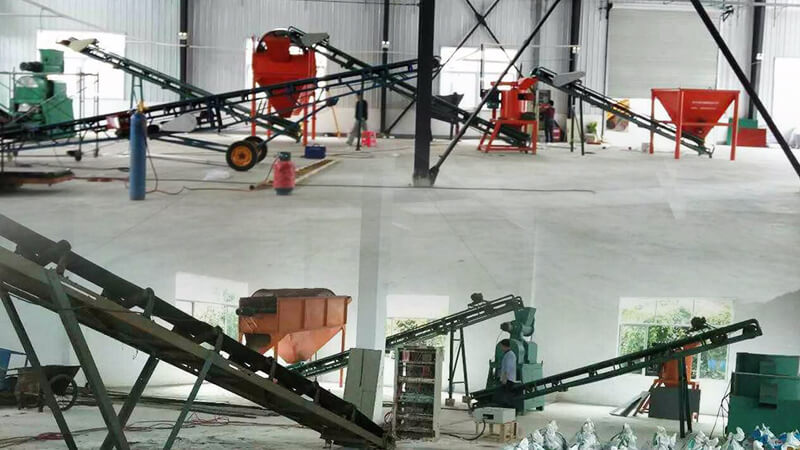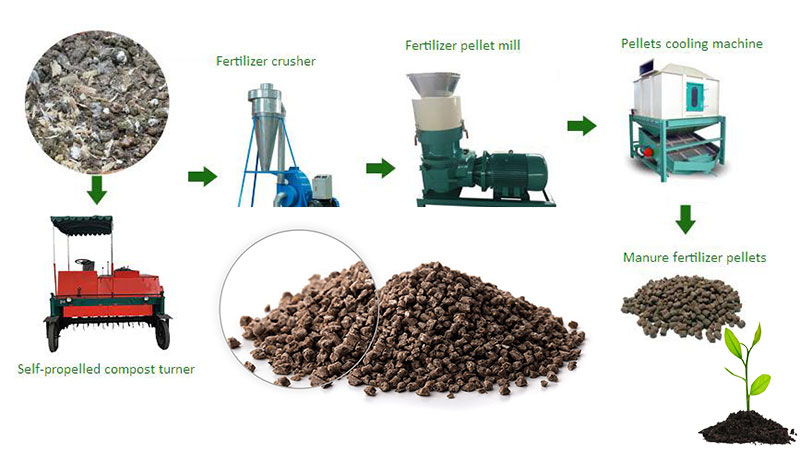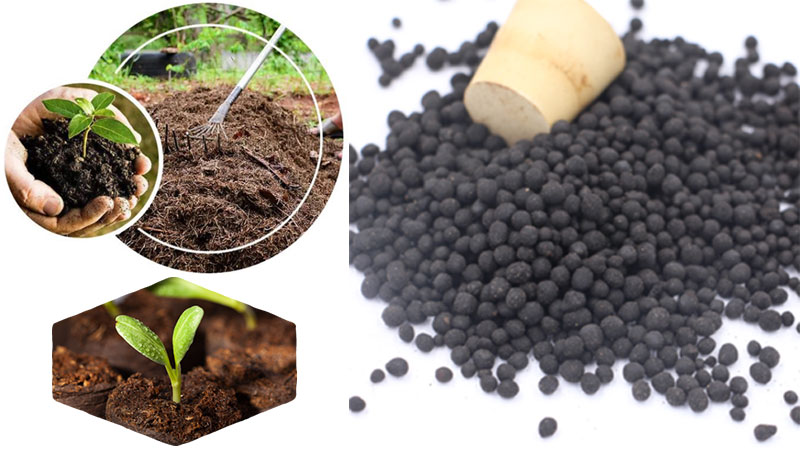Contents:
◇ Sucrose Production Status in the World
◇ Sugar/Sugarcane By-products and the Composition
◇ Value of Filter Press Mud as a Compost Fertilizer
◇ Filter Press Mud& Molasses Compost Fertilizer Manufacturing Process
◇ Sugar Filter Mud Compost Fertilizer Features and Functions
Sugar from sugarcane represents 65-70% of the world production of sugar. The production process requires high amounts of steam and electricity at the different stages, and generates important quantities of residues.
Sucrose Production Status in the World
There are more than one hundred countries around the world that produce sucrose. Brazil, India, Thailand and Australia are the world’s major producer and exporter of sugar. Sugar production produced by these countries accounts for about 46% of global output and total quantity of sugar exports accounts for around 80% of global exports. Brazilian sugar production and export volume ranking first in the world, accounting for 22% of sucrose annual total global production and 60% of total global exports. There is the sugarproduction of major sugar producer in 2015.
Sugar/Sugarcane By-products and the Composition
In sugarcane processing process, except for main products like white sugar and brown sugar, there are 3 main by-products: sugarcane bagasse, press 
◇Sugarcane Bagasse:
Bagasse is the fibrous residue from the sugar cane after extracting cane juice.Sugarcane bagasse can be very well utilized for production of organic fertilizer. However, since bagasse is almost pure cellulose and contains almost no nutrients it is not a viable fertilizer, the addition of other nutrients is very necessary, especially nitrogen rich materials, such as green materials, cow dung, pig manure etc., to make those decomposed.
◇Sugarcane Molasses:
Molasses is the by-product separated from ‘C’ grade sugar during the centrifuging of sugar crystals. The yield of molasses per ton of cane is in the range of 4 to 4.5%. It is sent out of the factory as a waste product.
However, molasses is a good, quick source of energy for the various forms of microbes and soil life in a compost pile or the soil. Molasses has a 27:1 carbon to nitrogen ration and contains about 21% soluble carbon. It is sometimes used in baking or for producing ethanol, as an ingredient in cattle feed, and as “molasses-based” fertilizer.
Percentage of nutrients present in Molasses
|
Sr.
|
Nutrients
|
%
|
|
1
|
Sucrose
|
30-35
|
|
2
|
Glucose & Fructose |
10-25
|
|
3
|
Moisture
|
23-23.5
|
|
4
|
Ash
|
16-16.5
|
|
5
|
Calcium and Potassium
|
4.8-5
|
|
6
|
Non-sugar Compounds
|
2-3
|
|
7
|
Other Mineral Contents |
1-2
|
◇Sugar Mill Press Mud:
Press mud, a major residue of the sugar production, is the residue from the treatment of sugar cane juice by filtration, accounting for 2% of the weight of sugarcane crushed. It is also called sugarcane filter press mud, sugarcane press mud, sugarcane filter cake mud, sugarcane filter cake, sugarcane filter 
Filter cake (mud) causes significant pollution, and in several sugar factories it is considered a waste, posing problems of management and final disposal. It pollutes the air and underground water if piling filter mud at random. Therefore, press mud treatment is the urgent issue for sugar refinery and environmental protection departments.
Application of filter press mud:
Actually, because of containing a considerable amount of organic matter and mineral elements required for plant nutrition, filter cake has already been utilized as fertilizer in several countries, including Brazil, India, Australia, Cuba, Pakistan, Taiwan, South Africa, and Argentina. It has been used as a complete or partial substitute for mineral fertilizers in sugarcane cultivation, and in the cultivation of other crops. Besides, press mud is also a base material for producing bio-earth which is done by composting with spentwash, a liquid- waste generated out of distillery operation
Value of Filter Press Mud as a Compost Fertilizer
The ratio of sugar yield and filter mud (water content 65%) is about 10: 3, that is to say 10 tons of sugar output can produce 1 ton of dry filter mud. In 2015, the total production of sugar in the world is 0.172 billion tons, with Brazil, India and China representing 75% of the world production. It is estimated that about 5.2 million tonnes of press mud is produced in India every year.
Before knowing how to environment-friendly manage filter press mud (cake), we should learn more about its composition so that a feasible solution can be found soon!
Physical properties and chemical composition of Sugarcane Press mud:
|
S.No.
|
Parameters
|
Value
|
|
1.
|
pH
|
4.95 %
|
|
2.
|
Total Solids
|
27.87 %
|
|
3.
|
Total Volatile Solids
|
84.00 %
|
|
4.
|
C.O.D.
|
117.60 %
|
|
5.
|
B.O.D.(5 days at 27°C)
|
22.20 %
|
|
6.
|
Organic Carbon.
|
48.80 %
|
|
7.
|
Organic matter
|
84.12 %
|
|
8.
|
Nitrogen
|
1.75 %
|
|
9.
|
Phosphorus
|
0.65 %
|
|
10.
|
Potassium
|
0.28 %
|
|
11.
|
Sodium
|
0.18 %
|
|
12.
|
Calcium
|
2.70 %
|
|
13.
|
Sulphate
|
1.07 %
|
|
14.
|
Sugar
|
7.92 %
|
|
15.
|
Wax and Fats
|
4.65 %
|
Seeing from above, Press mud contains sizable quantity of macro and micro nutrients, besides 20-25% of organic carbon. Press mud is also rich in potassium, sodium, and phosphorous. It is a rich source of phosphorus and organic matter and has a large moisture content, which makes it become a valuable compost fertilizer! A common use is for fertilizer, in both the unprocessed or processed form. Processes used to improve its fertilizer value include composting, treatment with microorganisms and mixing with distillery effluents
Filter Press Mud& Molasses Compost Fertilizer Manufacturing Process
◇Composting
First the sugar press mud (87.8%), carbon materials (9.5%) such as grass powder, straw powder, germ bran, wheat bran, chaff, sawdust etc., molasses 
These piles were given time to be composited and to complete digestion process for about 14-21 days. During piling, the mixture was mixed, turned and watered after every three days to maintain moisture content of 50-60 %. A compost turner was used for turning process to maintain uniformity and thoroughly mixing. 三(tips: compost windrow turner help fertilizer producer mix and turn the compost quickly, being efficient and necessary in organic fertilizer production line).
Fermentation Precautions
If the moisture content is too high, the fermentation time is extended. Low water content of the mud may cause incompletely fermentation. How to judge whether the compost is matured? Matured compost is characterized by loose shape, gray color (pulverized into taupe) and no odor. There is consistent temperature between the compost and its surroundings. The moisture content of compost is less than 20%.
◇Granulation Unit
The compost mixture is then sent to granulation unit – New type organic fertilizer granulator. Here molasses (0.5 % of total raw material) and water are sprayed before entering the dryer for the formation of granules. A Rotary drum dryer, adopting physical technology to dry granules, is used to form granules at a temperature of 240-250℃ and to reduce the moisture content to 10%.
◇Screening Unit
After granulation of compost, it is sent to screening unit – rotary drum screen machine. Average size of the bio-fertilizer should be of 5mm diameter for the ease of farmer and good quality granule. Oversize and undersize granules are recycled again to granulation unit. Product of required size is sent to Packaging unit – automatic compost fertilizer packaging machine – where it is packed in the bags through auto-filling. And then finally product is sent to distribution unit.
◇Block diagram of process description of compost fertilizer production
Sugar Filter Mud Compost Fertilizer Features and Functions
1. High disease resistance and less weeds:
During sugar filter mud treatment, microorganisms multiply quickly and produce large amounts of antibiotics, hormones and other specific metabolites. Applying fertilizer to the soil, it can effectively inhibit the spread of pathogens and weed growth, improve pest and disease resistance. The wet filter mud with no treatment is easy to pass the bacteria, weed seeds and eggs to crops and affect their growth).
2. High fertilizer efficiency: As the fermentation period is only 7-15 days, it retains the filter mud nutrients as far as possible. Because of the decomposition of microorganisms, it transforms the materials that are difficult to absorb into effective nutrients. The sugar filter mud bio organic fertilizer can play in fertilizer efficiency quickly and replenish nutrients required for the growth of crops. Therefore, fertilizer efficiency keeps at a long time.
3. Culturing soil fertility and improving the soil
Using a single chemical fertilizer for long-term, soil organic matter is gradually consumed, which results in the number of beneficial soil microbial reduction. In this way, enzyme content reduces and colloidal is damaged, causing soil compaction, acidification and salinization. Filter mud organic fertilizer can reunite sand, loose clay, inhibit pathogens, restore soil micro-ecological environment, enhance soil permeability and improve the ability to retain water and nutrients.
4. Improving crop yield and quality
After applying organic fertilizer, the crops have a developed root system and strong leafy strains, which promotes the germination of crops, growth, flowering, fruiting and maturity. It significantly improves the appearance and color of agricultural products, increases the amount of sugar cane and fruit sweetness. Filter mud bio-organic fertilizer uses as basal general and top dressing. In the growing season, apply a small amount of inorganic fertilizer. It can meet the needs of crop growth and reach the purpose to manage and use land.
5. Wide application in agriculture
Using as base fertilizer and topdressing for sugar cane, bananas, fruit tree, melons, vegetables, tea plant, flowers, potatoes, tobacco, forage, etc.
